What Makes Orion Easy Constellation to Recognizing the Nighttime Sky
Here are 12 easy constellations to find next time that you are out stargazing. For this blog, we have picked 12 major constellations from both Northern and Southern hemispheres. Ursa Major, Centaurus, Cassiopeia, Crux, Orion, Carina, Canis Major, Ursa Minor, Gemini, Taurus, Auriga, and Scorpius.
1. Ursa Major/Big Dipper - Best time to see: April
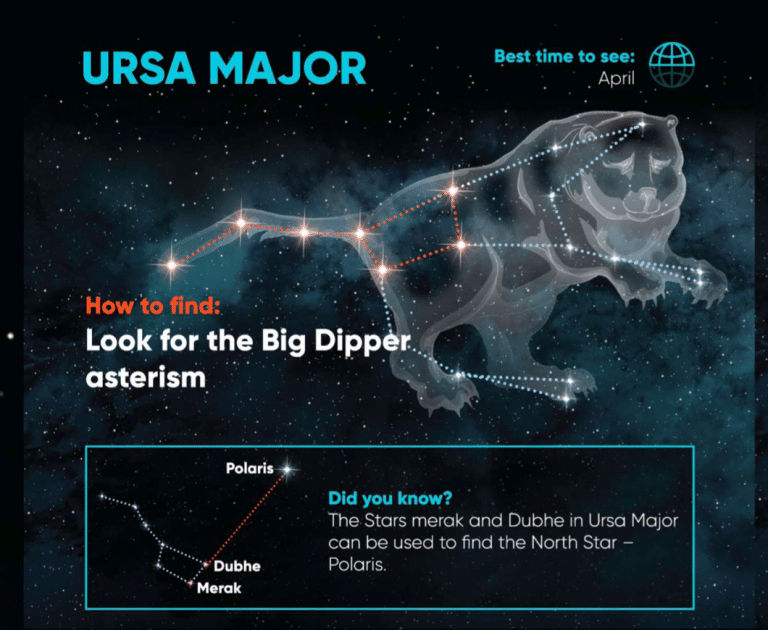
The best way to locate Ursa Major is to look for the Big Dipper asterism. This is predominantly the most easily recognizable constellation, that looks like a large spoon or perhaps a wheelbarrow.
Ursa Major is the third largest constellation in the sky, dominating an area of 1280 square degrees.
Ursa Major constellation is visible round the year from most of the northern hemisphere and appears circumpolar over and above the mid-northern latitudes. From southern temperate latitudes, the main big dipper asterism is invisible, but the southern parts of the constellation can still be visible.
2. Centaurus - Best time to see: May
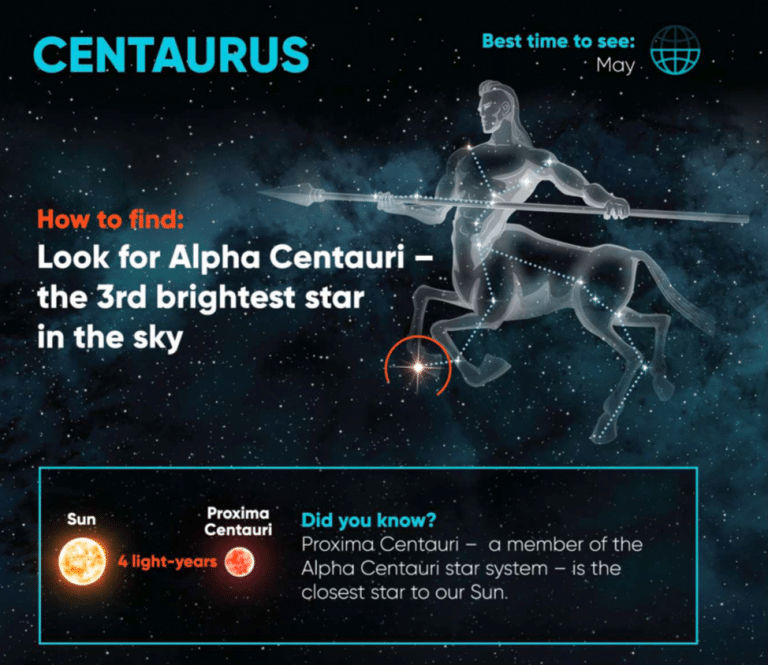
Centaurus is the ninth largest constellation seen in the sky, dominating an area of 1060 square degrees. It contains eleven stars with known planets.
The Alpha Centauri is the brightest star in the constellation, which is also the fourth brightest star in the night sky.
Beta Centauri, the second brightest star in Centaurus, is the tenth brightest in the night sky.
All in all, Centaurus contains eight named stars.
3. Cassiopeia - Best time to see: November
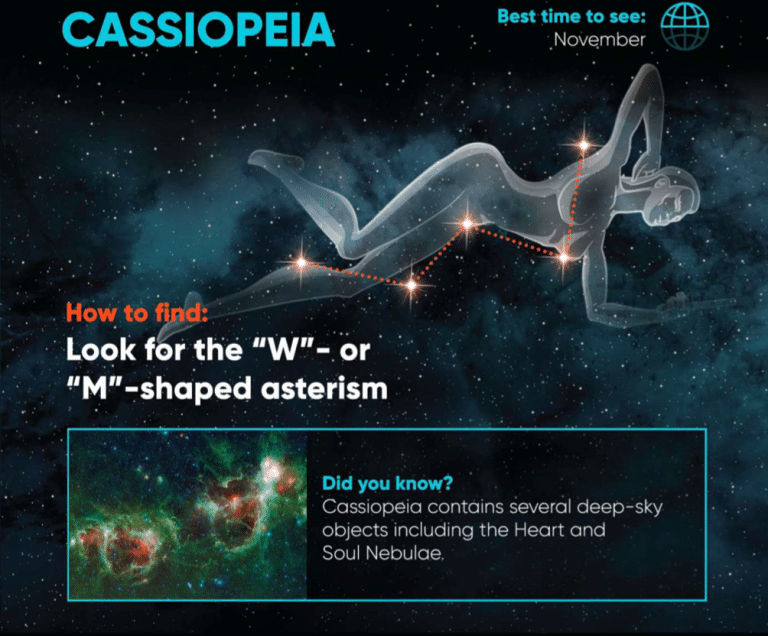
Cassiopeia is the 25th largest constellation in the night sky, filling up an area of 598 square degrees. It contains eight named stars. The brightest star in the Cassiopeia constellation is Schedar, Alpha Cassiopeiae
Cassiopeia is easily recognizable for the prominent Wasterism formed by its five brightest stars. Spotted in the northern sky, the constellation is named after Cassiopeia, the vain and boastful queen in Greek mythology.
4. Crux - Best time to see: May
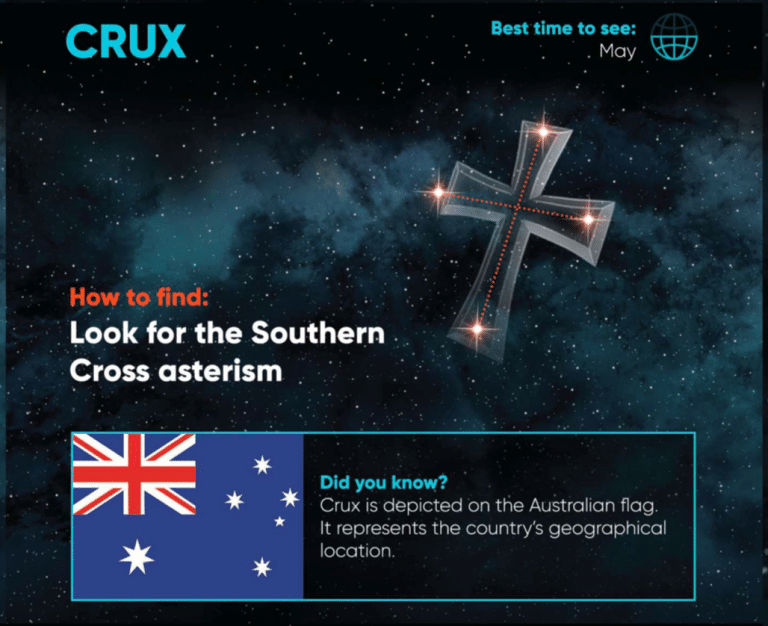
The Crux is one most easily distinguished constellations. Centered on four stars in the southern sky it fills in a bright portion of the Milky Way. It is, however, the smallest of 88 constellations occupying an area of only about 68 square degrees.
The Crux is one of the easy constellations to find for its predominant cross-shaped asterism, the Southern Cross, formed by its five brightest stars.
It contains six named stars, the brightest star in the constellation is Acrux, Alpha Crucis.
5. Orion - Best time to see: January
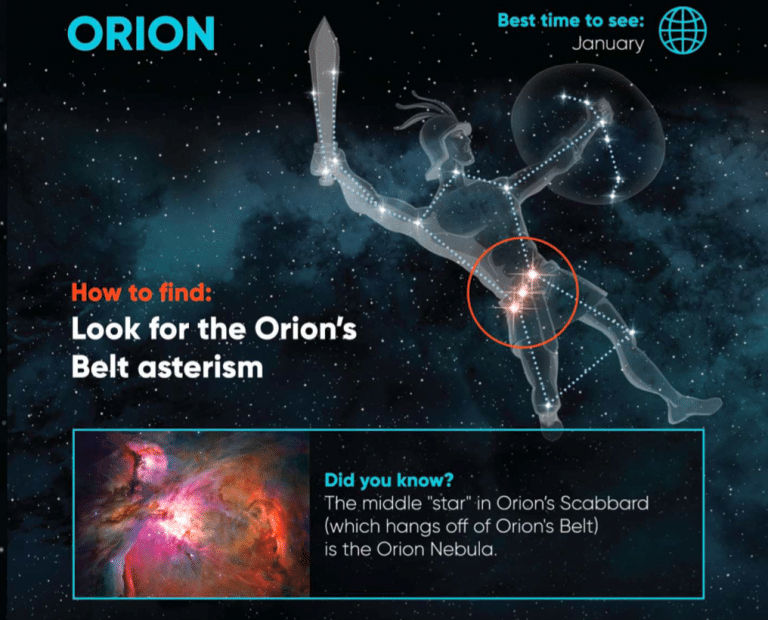
Orion is one of the highly recognized constellations, is visible high in the night sky through the year.
It comprises several projecting, bright stars including the red giant Betelgeuse (Alpha Orionis) at the upper left and blue giant Rigel (Beta Orionis) at the lower right.
In the center is Orion's "belt" comprising of three bright blue stars.
The Orion Nebula is in his "sword" right below the belt, just visible to unaided eyes in very clear, dark, blue skies.
6. Carina - Best time to see: March

Carina constellation is located in the southern skies. The name means "the keel", keel of a ship, in Latin.
This is the 34th largest constellation in the sky, filling up an area of 494 square degrees.
Carina is composed of 11 stars (five are named) with known planets and contains no messier objects. The brightest star in the constellation is Canopus, Alpha Carinae.
This constellation was originally a part of the much larger Argo Navis, which represented the ship Argo.
7. Canis Major - Best time to see: February

Canis Major is a constellation to be looked for in the southern skies. Its name means "the greater dog" in Latin.
Canis Major has Sirius, the brightest star in the sky, as well as several other notable deep sky objects.
Canis Major is the 43rd biggest constellation in the sky and occupies an area of 380 square degrees.
It contains ten formally named stars.
8. Ursa Minor - Best time to see: All through the year, preferably July

Ursa Minor, also known as the little bear, consists of an asterism called the Little Dipper. Polaris, or the North Star, is the last star of the little dipper. Polaris is a star in the celestial north pole, so it does not change its position all through the year. Sailors use it like a GPS in celestial navigation. Polaris is not bright enough to spot directly, but can be tracked with the help of Ursa Major.
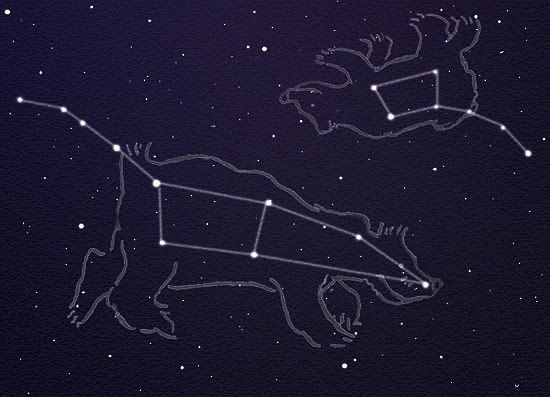
9. Gemini: Best time to see: February

Gemini is a relatively obscure constellation compared to Orion which is easily identifiable. Gemini is sandwiched between Orion and Taurus, to the left side of Orion. The brightest stars of Gemini are Castor and Pollux, which form the heads of the twins. The constellation can be traced from Orion's belt in a leftward direction.
10. Taurus: Best time to see: January
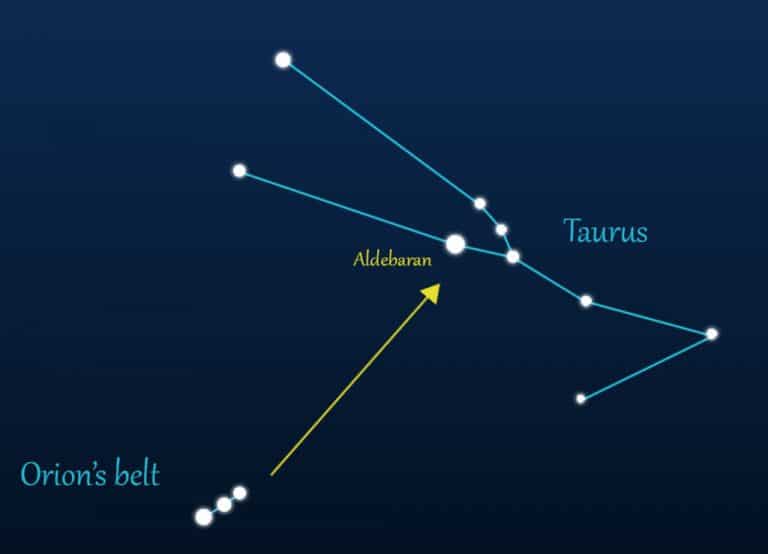
Taurus is fixed to the right of Orion. You'll need to locate Orion's belt, from which an imaginary straight line can be traced upwards and to the right. Your eyes will land on the brightest star of Taurus, Aldebaran, which forms the base of the right horn of Taurus.
Orion's Belt
It plays a major role in the visualization of several constellations and stars. To the left on the east of Orion's belt is Sirius, or the dog star, which is the brightest star of the sky and part of the constellation Canis Major. To the west of Orion's belt is the orange star Aldebaran, which is part of Taurus.
11. Auriga: Best time to see: February
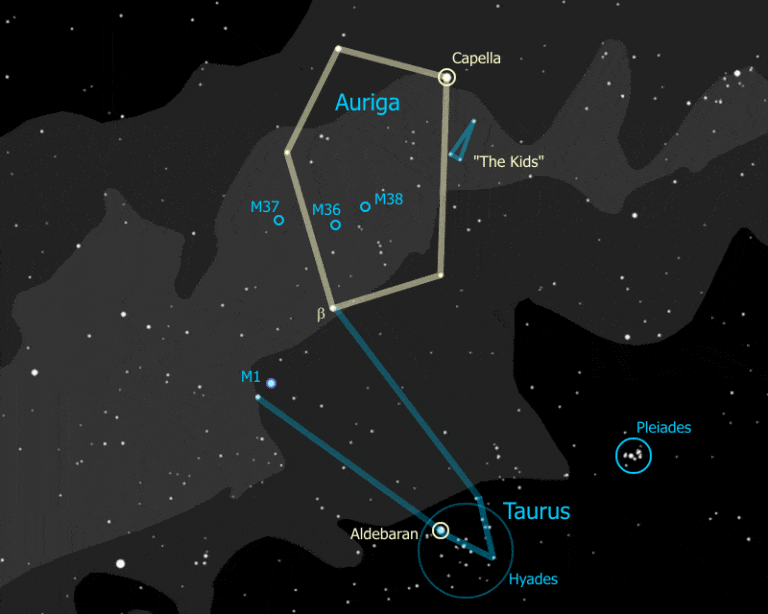
Auriga is a pentagon-shaped winter constellation of the northern hemisphere, and the brightest star of Auriga is Capella. The constellation Taurus is connected to Auriga.
12. Scorpius: Best time to see: July

The Scorpius constellation lies in the southern sky and is easy to find because of its proximity to the Milky Way. The brightest star is Antares, and it is red. Scorpius is shaped like the letter J, curved at the rear to give the shape of a scorpion tail.
Major Constellations in the Northern and Southern Hemisphere (Grouped by Season)
The view of the constellations is dependent on the hemisphere and the seasons, except for the circumpolar constellation which is observed throughout the year.
• The Southern hemisphere winter constellations and the Northern hemisphere summer constellations are the same and vice versa.
• Winter constellations are observed in the night sky from late December to late March in the northern hemisphere and from late June to late September in the southern hemisphere.
• Let's explore the winter and summer constellations of the Northern hemisphere.
Northern Hemisphere Winter Constellations: (December, January, February)
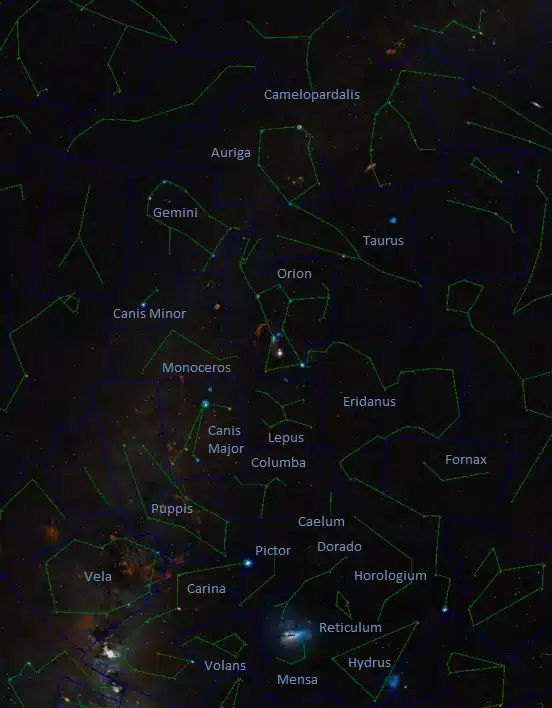
The major northern hemisphere winter constellations include Auriga, Canis Major, Canis Minor, Carina, Eridanus, Gemini, Monoceros, Orion, and Taurus.
Northern Hemisphere Summer Constellations (June, July, August)

The major northern hemisphere summer constellations are Bootes, Corona Borealis, Darco, and Scorpius.
Spring Constellations (March, April, May)
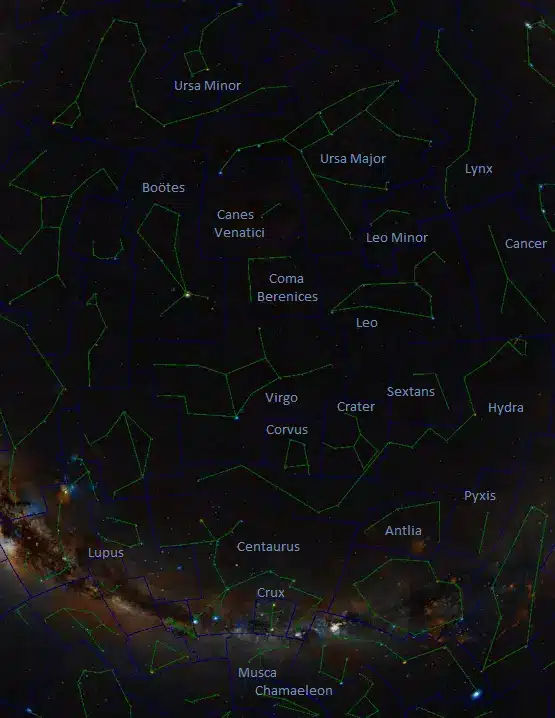
The major norther hemisphere spring constellations are Hydra, Virgo and Ursa Major.
Autumn Constellations (September, October and November)

The major norther hemisphere autumn constellations are Aquarius, Aries and Pisces.
There are many more constellations in the night sky than we have listed here. There are also a number of available alternatives of online resources that can help you identify the location and shapes of constellations. You can also use apps like Starwalk to help you find the constellations in your neck of the woods.
Hopefully, this little introduction has been helpful to gain some reference for "star gazing" and "starry knowledge". Be sure to download the poster and enjoy learning about constellations and how to connect the twinkling stars next time you go out for a night walk.
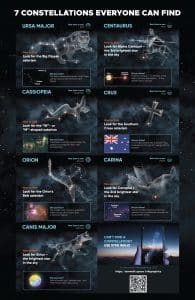
Constellation poster, featured in our Fall 2021 issue of Smore, is available for free download here.

Source: https://www.smorescience.com/easy-constellations-to-find/
0 Response to "What Makes Orion Easy Constellation to Recognizing the Nighttime Sky"
Post a Comment